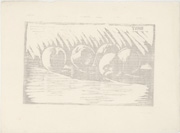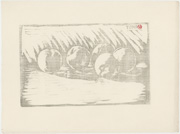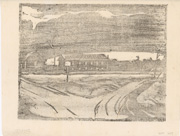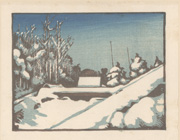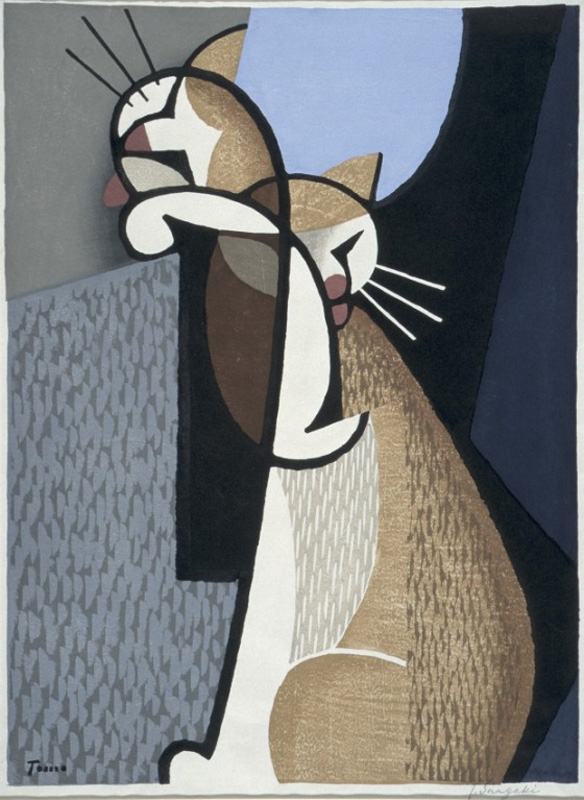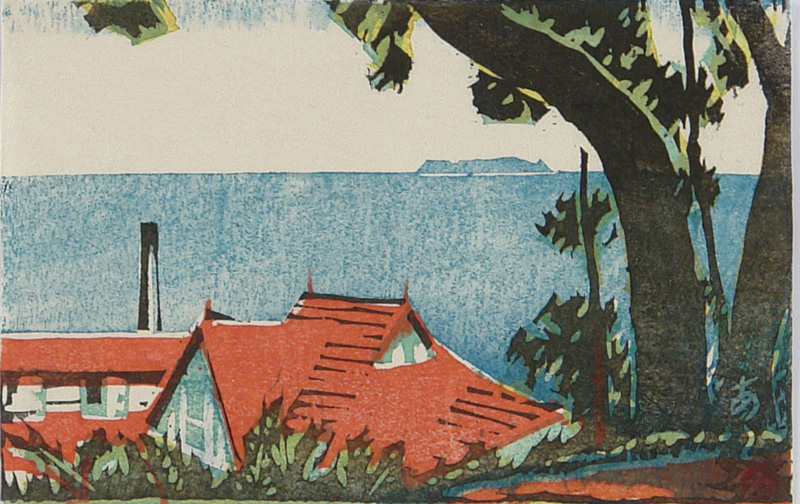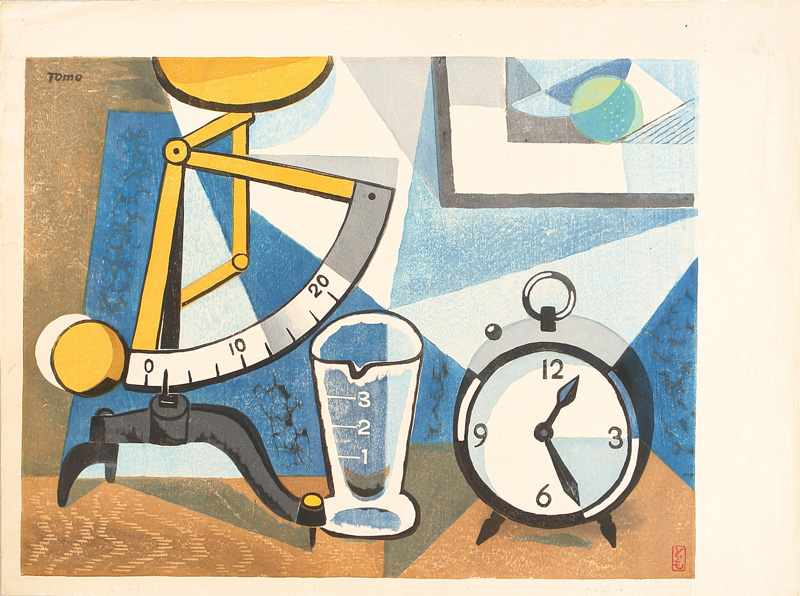Prints in Collection
Peaches, 1925
IHL Cat. #1620IHL Cat. #1662
IHL Cat. #1309
Clear Sky After the Snow from the magazine HANGA, Vol. 14, 1928
IHL Cat. #1418
Biographical Data
Biography
Inagaki Tomoo 稲垣知雄 ながとろ (1902-1980)Sources: Modern Japanese Prints 1912-1989, Lawrence Smith, British Museum Press, 1994, p. 25; Modern Japanese Prints: An Art Reborn, Oliver Statler, Charles E. Tuttle Company, 1956, p. 164-165; Guide to Modern Japanese Woodblock Prints: 1900-1975, Helen Merritt, University of Hawaii Press, 1992, p. 41; website of John Fiorillo http://viewingjapaneseprints.net/texts/sosakutexts/sosaku_pages/inagaki_tomoo.html and as footnoted.
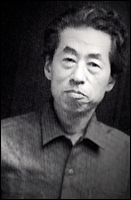 | Born in Tokyo, Tomoo graduated from Okura Commercial High School in 1923. While in high school he began painting in oils. After graduation he worked for a steel company, but he soon realized that his destiny was to be an artist and enrolled in a two year commercial art school. Upon graduation he worked in the display department of a Yokohama store for several months before setting up his own commercial art studio in Tokyo. For his start in prints Tomoo credits the magazine Shi to Hanga ["Poetry and Prints"], published in the early 1920s by the two most prominent sosaku hanga artists Onchi Kōshirō (1891-1955) and Hiratsuka Un'ichi (1895-1997). After one of his prints was accepted for publication in 1924, Tomoo was allowed to attend meetings of the Shi to Hanga group “in which the editors and contributors discussed common problems and criticized each other’s work.” Tomoo credits these meetings |
as his "only training in woodblock." Now dedicated to print making, Tomoo had his prints published in various small print magazines and folios, including HANGA (“Prints”) issues 6, 9/10, 11 and 14, Kitsutsuki (“Woodpecker”) and Ichimokushū ("First Thursday Collection"). Also in 1924 he first exhibited with the Nihon Sōsaku Hanga Kyōkai (Japan Creative Print Association). In 1932 he became of member of the Nihon Hanga Kōkai (Japan Print Association).
As with most print artists Tomoo was not able to make a living solely from print making and worked as a teacher, teaching at the Commercial Artists Association School from 1930 until 1951 and then the Japan Advertising Art School, and as a freelance designer, operating his own design business Zuhansha1 until WWII.
Atami Hot Springs Resort, 1930
5.6 x 3.6 in. (14.2 x 9 .2 cm)
Source: Artelino
Laboratory Still Life, 1949
24.6 x 18.4 in. (62.5 x 46.8 cm)
Source: Artelino
1953 Comments on the Artist by Onchi Kōshirō
In 1953, Onchi Kōshirō (1891-1955), one of the founders of the modern Japanese print movement (sosaku hanga), published the book Nippon Gendai Hanga ("The Modern Japanese Print.") The below translation of his entry for Inagaki was published by The Japan Ukiyo-e Society in 1965 under the title "The Modern Japanese Print: An Internal History of the Sosaku Hanga Movement by Koshiro Onchi," in the magazine Ukiyo-e Art, Number Eleven, Special Issue, Modern Japanese Prints. For the complete translation see the article The Modern Japanese Print: An Internal History of the Sosaku Hanga Movement by Onchi Kōshirō on this website.

Collections
New York Museum of Modern Art; Cincinnati Art Museum; Setagaya Art Museum, Tokyo; Machida City Museum of Graphic Art, Tokyo; Chiba Prefectural Museum; Yokohama Art Museum; Museum of Fine Arts, Boston; Los Angeles County Museum of Art; Carnegie Museum of Art; Art Institute of Chicago; Portland Art Museum; The British Museum; Harvard Art Museums/Arthur M. Sackler Museum; Honolulu Museum of Art; The Museum of Modern Art, Kamakura & Hayama; The National Museum of Art, Osaka
 T. Inagaki with 知雄 Tomoo seal |  T. Inagaki T. Inagaki |  Tomo |  Tomo. Tomo. |
 Inagaki seal |  Tomo seal |  |  To seal |  To seal |  To seal |
1 Modern Boy, Modern Girl: Modernity in Japanese Art, 1910-1935, Ajioka Chiaki, Jackie Menzies, et al, Art Gallery of New South Wales, 1998, p. 152.
2 website of the Independent Administrative Institution National Research Institute of Cultural Properties, Tokyo http://www.tobunken.go.jp/materials/bukko/9971.html
